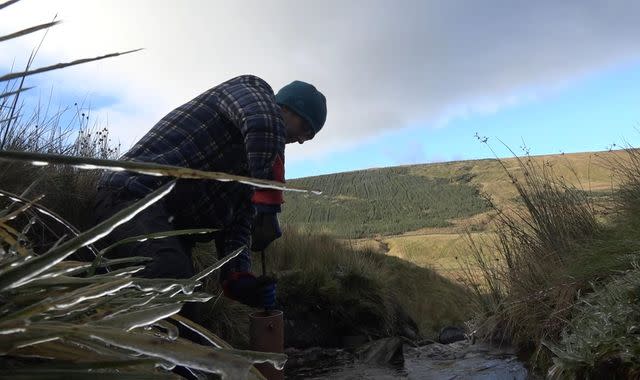Decades-long experiment on flooding begins in the Yorkshire Dales

On the tops of the Yorkshire Dales, a group of scientists brace against a winter frost.
All around them are tens of thousands of saplings that will soon grow into one of England's biggest new native woodlands - and become the subjects of a massive, decades-long experiment.
The hillside, called Snaizeholme in North Yorkshire, will become a vast patchwork of trees, heathers, and peat bogs. It sounds idyllic, but the plan isn't just to make God's Own Country more beautiful. Instead, the trees, wildlife and funghi should all help to reduce flooding in the villages below.
It's a huge undertaking - the biggest piece of scientific research ever started on English uplands.
The experiments the scientists are installing will last two decades and measure everything from how many lightning strikes occur, to how fast the valley's 21 streams run, to how dense the soil is.
They're trying to work out how quickly a restored habitat like this can protect us from the problems caused by extreme weather, which are likely to become more common as the atmosphere warms up.
Dr John Crawford from the Woodland Trust said: "Trees can play a really important role in helping us adapt to some of the impacts of climate change. They can provide shelter and reduce flood risk by slowing the flow of water in our landscapes.
"They can also provide homes for wildlife and nature to return to our landscapes. And that's really important because with climate change, we're likely to see increased threats to both people and nature."
When it rains, trees work a bit like skewers in a lemon drizzle cake. The growing roots make space in the soil, and leave room for rainwater to soak into the ground, instead of sliding straight off and into streams.
They also help soften and spread out how the rain lands in the first place, which helps it soak in.
Read more:
Hydrogen may never heat British homes after trial cancelled
'Historic' COP28 deal to 'transition away' from fossil fuels adopted
Dr Rob Marshall spends a lot of time prodding soil.
"When we have a system like this, which is full of beautiful mosses and grasses and sedges, we have a certain kind of diversity. When we bring in trees, there's also going to be different plants. They're going to deliver different types of plant litter and that may also change the complexity of the belowground biology.
"That's really important because in the face of things like climate change, when you have a greater diversity, it's possible that you have more resilience to climate extremes."
As we watch, another pair of scientists, this time from the University of Leeds, install pressure gauges in a stream.
The next time a storm blows through Snaizeholme, they'll know how fast the water runs - and in 20 years, that same dataset will show them how much that has changed.
In September, the government announced it would spend £25m on projects that used nature to reduce flooding. In the long term, the scientists in the hills hope to show that money is well spent. For now, they're just happy to warm up.

 Yahoo News
Yahoo News 
